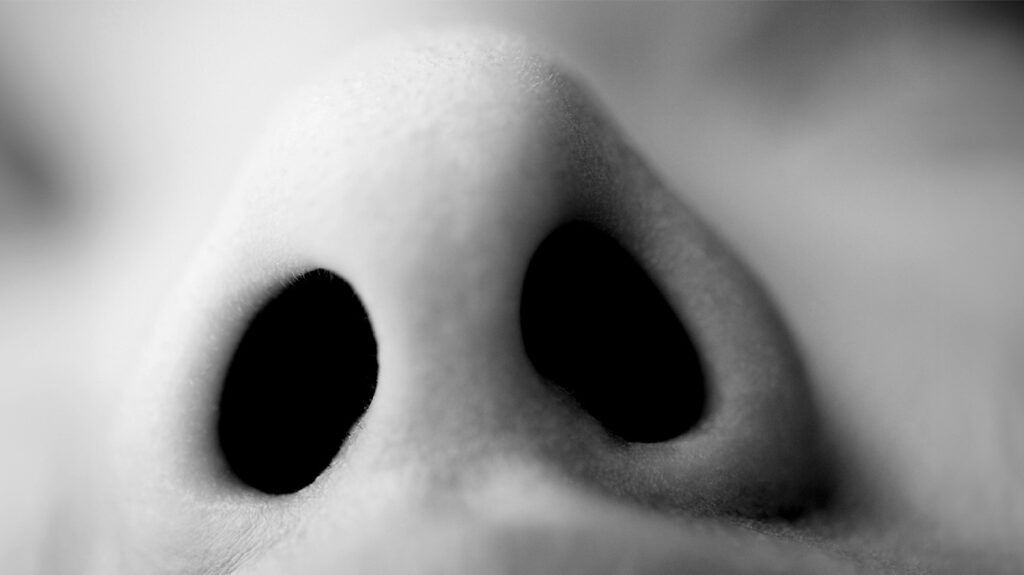A deviated septum is when the nasal septum is off-center, making one air passage smaller than the other. This can cause headaches and other symptoms.
The nasal septum is a wall of cartilage and bone that separates the nose into two chambers, or nasal cavities. When this tissue is significantly displaced to one side, it is known as a deviated septum.
When a person has a septal deviation, one nasal cavity may be smaller than the other. These changes in the structure of the nasal passage can result in several symptoms, such as difficulty breathing, sinus infections, and headaches. However, some people may not experience any symptoms.
This article discusses how a deviated septum causes headaches. It also explains other signs and treatment options for a deviated septum.

A
Similarly, a 2018 study adds that anatomical variation of the nose, such as a deviated septum, can result in headaches. Some health experts may refer to these types of headaches as contact point headaches. These contact points can lead to headaches
A deviated septum is when the bone and cartilage that separate the nasal cavity — known as the nasal septum — are deviated (off-center). This septal tissue is the reason people have two nostrils.
A septal deviation results in one nasal passage being smaller than the other. Roughly 80% of people have a nasal septum that is slightly off-center. However, if the deviation is minor, people may not notice it and may not experience symptoms.
If the septum is significantly off-center, it is known as a deviated septum. This deviation can alter the pattern of airflow in the nose and may lead to symptoms such as headaches, breathing concerns, and other health issues.
Read more about deviated septums.
Research notes a relationship between a deviated septum and different types of headaches.
For example, a person
Additionally,
In some cases, a severe or complex septal deviation can affect the external presentation of a person’s nose. Some people with a deviated septum
In addition to headaches, other symptoms of a deviated septum can include:
- nasal congestion
- blockage of one or both nostrils
- frequent sinus infections
- frequent nosebleeds
- facial pain
- postnasal drip
- noisy and mouth breathing during sleep
- difficulty breathing
In cases of a mildly deviated septum, people may only notice symptoms when they have a cold or other upper respiratory infection. This is because the infection causes tissue in the nose to swell, which can exacerbate airflow problems.
If a person is experiencing symptoms, such as headaches, due to a deviated septum, a healthcare professional may recommend a surgery procedure known as a septoplasty. During the operation, a surgeon will attempt to straighten, reshape, or remove bent cartilage and bone in the septum.
A
If a person is experiencing frequent headaches, it is advisable for them to contact a healthcare professional. Other possible signs of a deviated septum that may warrant medical attention include:
- difficulty breathing
- frequent sinus infections
- difficulty sleeping
- frequent nosebleeds
Can a deviated septum cause brain issues?
In general, a deviated septum is unlikely to result in brain problems. However, they can cause headaches or sleeping difficulties, which may affect cognitive function.
Additionally, it is important to consider the cause of the deviated septum. For example, it can occur after an injury. In some cases, these accidents can also cause injury to the brain.
Can septoplasty cure headaches?
A septoplasty is a surgical procedure to help correct a deviated septum. As this operation treats a deviated septum, it may help relieve headache symptoms in some individuals. However, this may depend on the type of headaches they experience.
For example, a
Headache and migraine resources
To discover more evidence-based information and resources for headaches and migraine, visit our dedicated hub.
A deviated septum describes an asymmetrical nasal septum. This is the tissue that separates the nostrils. When the deviation is severe enough, people may experience symptoms such as breathing problems and headaches.
Generally, people may experience headaches due to anatomical variations in the nasal passage. This results in contact points, where tissues in the nasal passage irritate each other. This irritation sends pain along the sensory nerve, leading to a headache.
Typically, treatment for septal deviation involves a surgical procedure known as a septoplasty, in which a surgeon reshapes the bone and cartilage in the nose.
